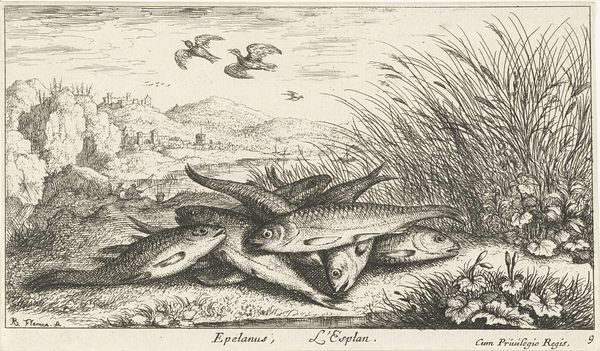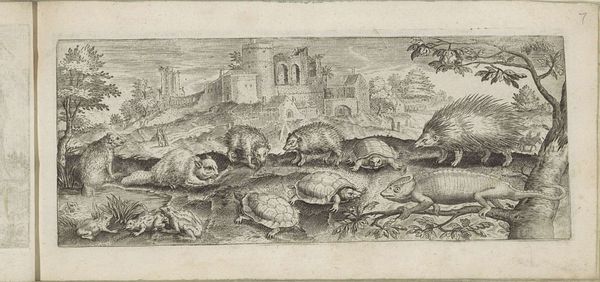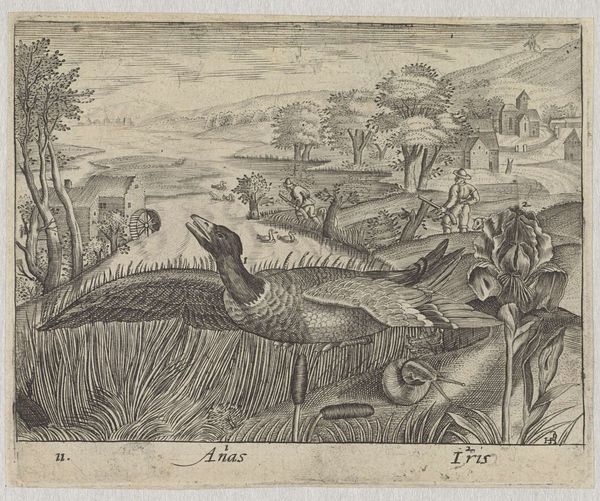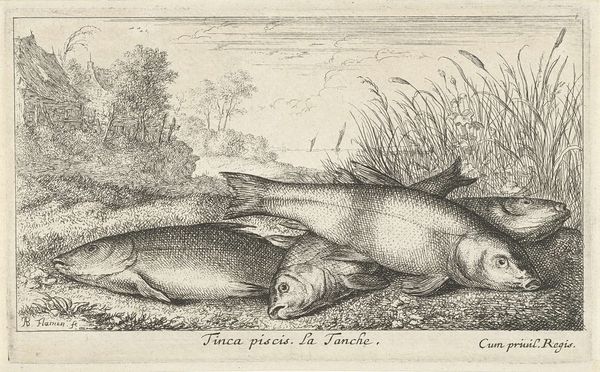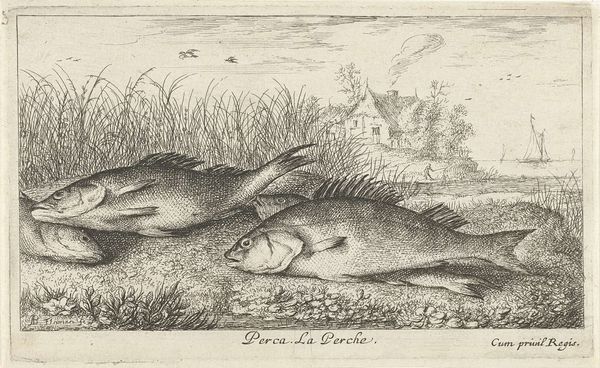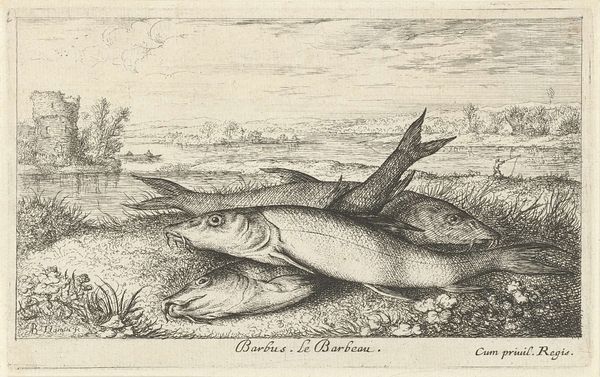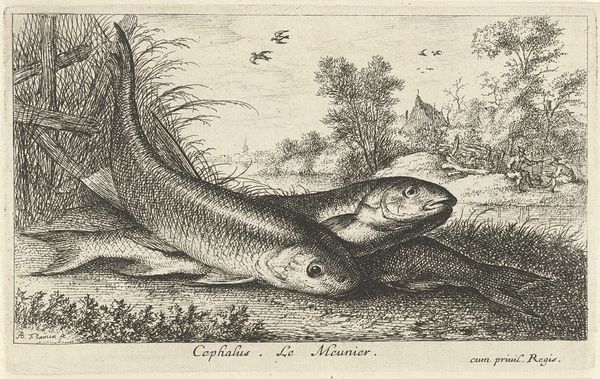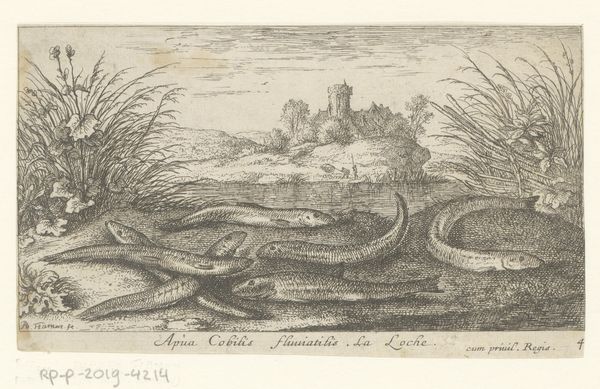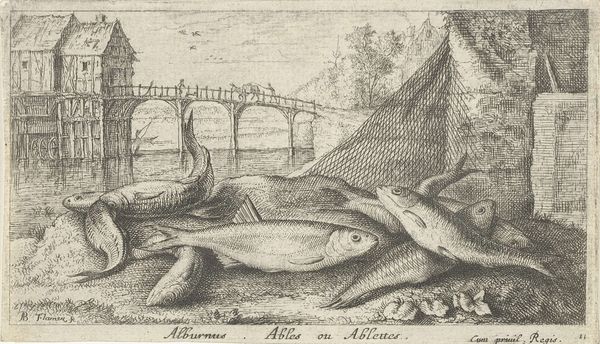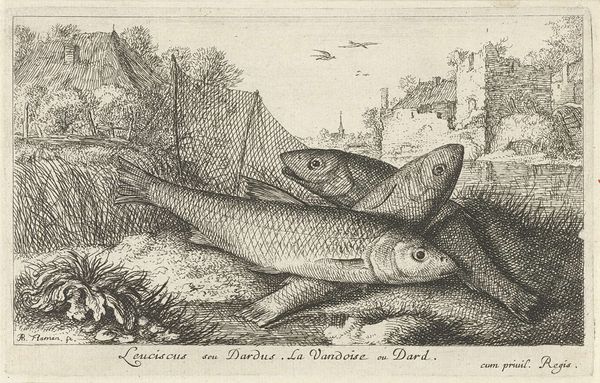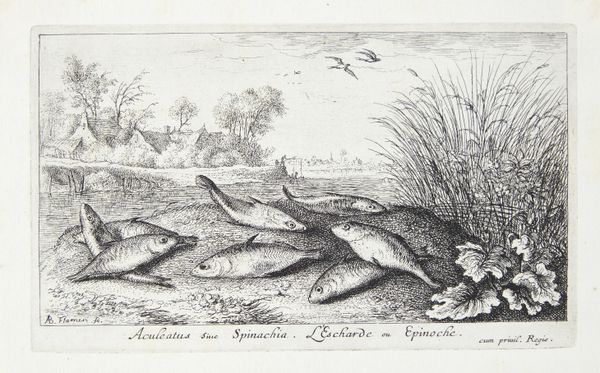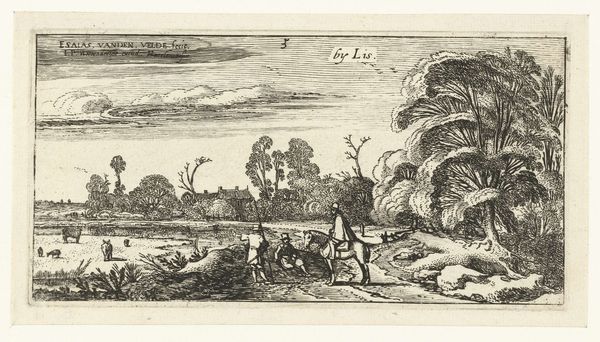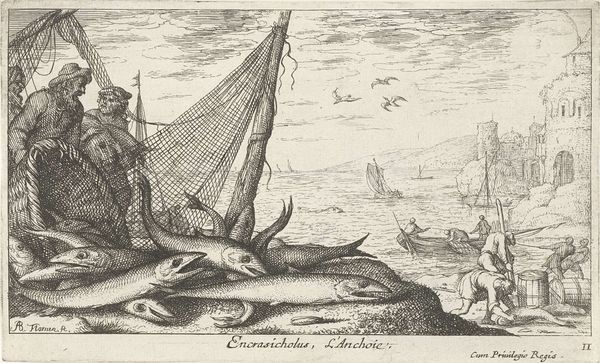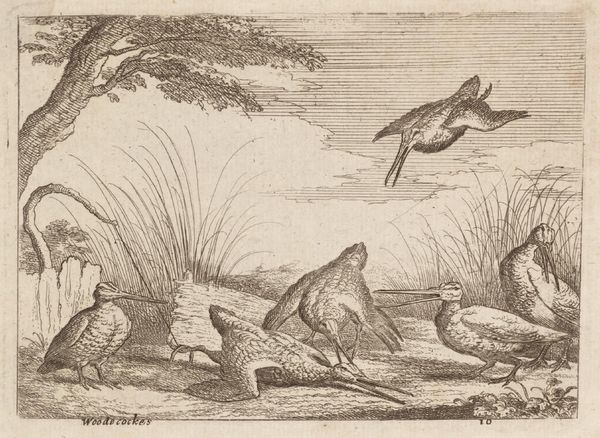
print, etching
# print
#
etching
#
landscape
#
genre-painting
Dimensions: height 107 mm, width 172 mm
Copyright: Rijks Museum: Open Domain
Albert Flamen made this print of four bullheads on a riverbank using etching, a printmaking technique that relies on acid to incise lines into a metal plate. The plate is then inked and used to transfer the image onto paper. In this work, the fine, closely-laid lines suggest the weight and form of the fish, as well as the textures of the surrounding landscape. This was a demanding process, requiring skill in manipulating the etching tools, and a deep understanding of the materials involved. Prints like this played a key role in the visual culture of the 17th century. They were relatively inexpensive to produce, and allowed for the wide distribution of images. This had significant implications for the development of art and design, contributing to the growth of a consumer culture, and influencing the ways in which people perceived and interacted with the world around them. It's a reminder that even seemingly simple images can have a rich history tied to social, economic, and technological developments.
Comments
No comments
Be the first to comment and join the conversation on the ultimate creative platform.
